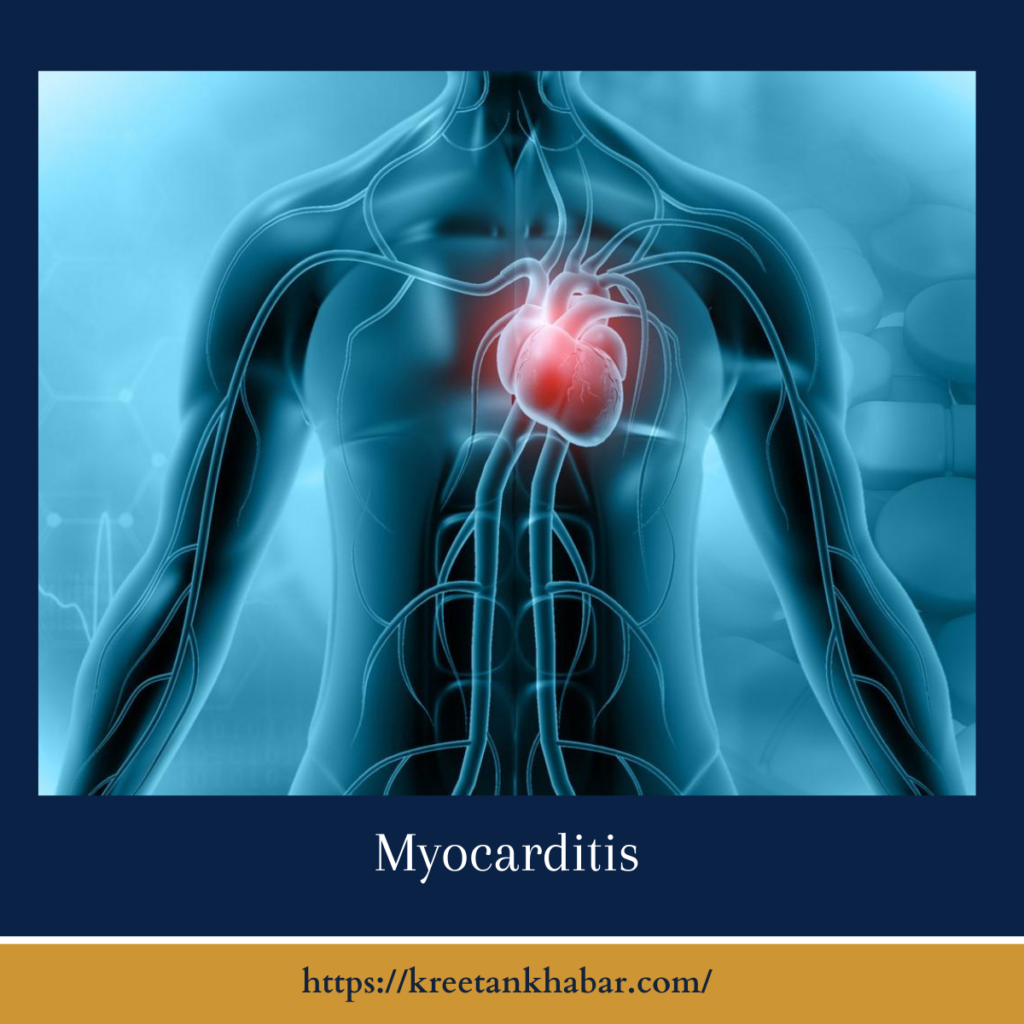Myocarditis and Its Intricacies
Introduction:
In the symphony of bodily functions, the heart takes center stage, orchestrating the rhythm of life. However, amid the beats and pulsations, there exists a condition that can disrupt this harmonious cadence – myocarditis. This often-misunderstood inflammation of the heart muscle not only warrants attention but also demands a deeper exploration. Join us on a journey into the complexities of myocarditis, its origins, manifestations, and the strides being made in unraveling its mysteries.

The Heart’s Unseen Battle:
Myocarditis, at its core, is an inflammation of the myocardium, the muscular tissue comprising the heart. While the causes can be diverse, the result is a heart that must grapple with an internal battle, navigating the challenges posed by inflammation. From infectious agents to autoimmune responses, the triggers for myocarditis are as varied as the symptoms it presents.
Unveiling the Culprits:
Infections, both viral and bacterial, stand as prominent culprits in the onset of myocarditis. Viruses like enteroviruses and adenoviruses, as well as bacteria such as Borrelia burgdorferi (responsible for Lyme disease), can infiltrate the heart muscle, inciting an inflammatory response. Beyond infections, autoimmune disorders and certain medications can also contribute to the development of myocarditis, adding layers of complexity to its diagnosis and management.
Manifestations of Myocarditis:
Myocarditis often speaks its presence through a diverse array of symptoms. Chest pain, shortness of breath, and palpitations are common indicators, reflecting the heart’s struggle against inflammation. Fatigue, a generalized sense of malaise, and swelling in the lower extremities may further underscore the systemic impact of myocarditis. However, these manifestations can vary, making the condition a master of disguise and challenging healthcare providers in their diagnostic endeavors.
From Acute to Chronic:
Myocarditis can present in different phases, with acute and chronic forms dictating the course of the condition. The acute phase is marked by the sudden onset of symptoms, often resembling those of a viral infection. In some cases, the inflammation resolves on its own. However, if left unchecked, myocarditis can transition into a chronic state, potentially leading to persistent heart issues and complications.
Diagnostic Dilemmas:
Diagnosing myocarditis is akin to unraveling a medical mystery. The absence of a definitive diagnostic test poses challenges, and healthcare providers must rely on a combination of clinical assessments, imaging studies, and laboratory tests to piece together the puzzle. Advanced techniques such as cardiac MRI play a pivotal role in visualizing the extent of inflammation and assessing the heart’s function.
Treatment Strategies:
The treatment landscape for myocarditis depends on its underlying cause and the severity of symptoms. While some cases may resolve with rest and supportive care, others require more targeted interventions. Medications to reduce inflammation, manage symptoms, and support heart function form the cornerstone of therapeutic approaches. In severe cases, advanced treatments such as immunosuppressive therapy or mechanical circulatory support may be considered.
The Road to Recovery:
Recovering from myocarditis is often a journey marked by patience and vigilant care. Lifestyle modifications, including rest, a heart-healthy diet, and regular exercise tailored to individual capabilities, play crucial roles. For some, myocarditis becomes a transient chapter in their medical history, while for others, it may necessitate ongoing management to safeguard cardiac health.
Conclusion:
In the intricate dance of the heart, myocarditis introduces a challenging choreography. Understanding its origins, recognizing its diverse manifestations, and embracing evolving diagnostic and treatment strategies are essential steps in navigating this complex condition. As researchers and healthcare providers delve deeper into the intricacies of myocarditis, the hope is to unravel its mysteries further and refine our approaches to preserving the rhythm of the heart.
Read also : Exploring the Delightful Boost of the Green Tea Shot 2023